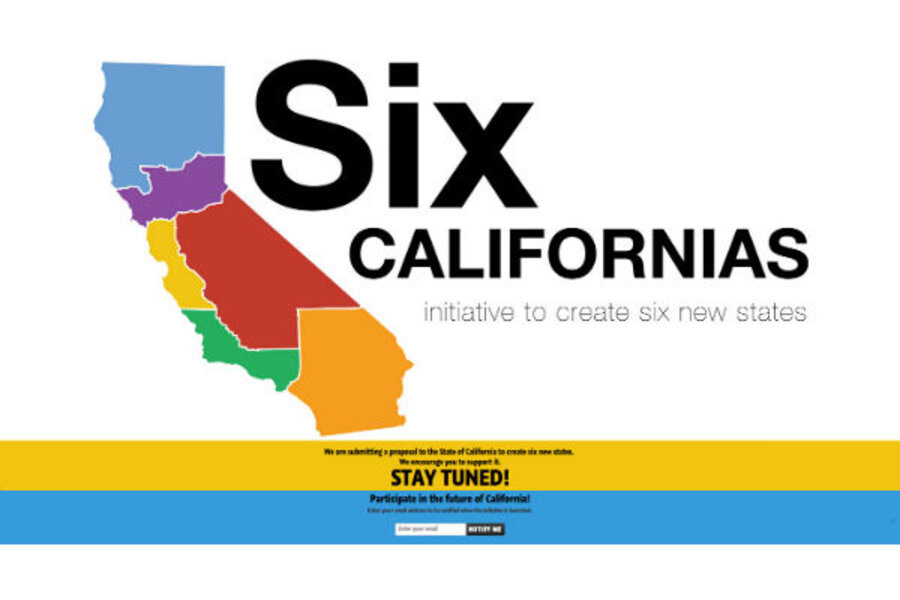California in six easy pieces? A bid to let voters decide.
Loading...
Billionaire Tim Draper wants to redraw the map of California. His solution? Divide the Golden State into six more-manageable states.
“California as it is is ungovernable,” Mr. Draper told ABC News on Wednesday. “It is more and more difficult for Sacramento [the capital] to keep up with the social issues from the various regions of California. With six Californias, people will be closer to their state governments, and states can get a refresh."
With 38 million residents, California is America’s most populous state. The state economy rivals that of Italy and the Russian Federation.
The California Attorney General’s office gave Draper the green light, Tuesday, to begin collecting the 807,615 signatures needed to include the Six Californias initiative on the November ballot.
While the idea may seem far-fetched, Draper’s vast financial resources and apparent commitment to applying them to this initiative could help to propel his proposal to the ballot. He has said that if he is not able to obtain enough signatures by the July deadline, he will continue to strive for a 2016 ballot question.
However, even if Californians prove willing to divvy up the state, Congress would also have to sign off on the measure and the addition of 10 new seats in the Senate, as outlined in Article IV of the US Constitution.
“I don’t think anyone is going to give California 12 Senate seats,” said Raphael Sonenshein of California State University in Los Angeles. “It’s certainly fun to talk about … [but] its prospects are nil.”
Draper is not the first to suggest that California would be better off as several smaller states. More than 200 such proposals have surfaced in the state’s 164-year history. Portions of northern California and southern Oregon have been trying to secede from their respective parent states and to form the state of Jefferson since 1941.
In 2011, a Republican member of the Riverside County Board of Supervisors floated the idea of establishing a separate state of South California with 12 other conservative counties to form the nation’s 51st state.
Both Jefferson and South California are getting another look in Draper’s proposal. The other four states would likely break down into North California, which would include Sacramento, Sonoma, and Napa counties; Central California, including Fresno, Mariposa, and San Joaquin counties; West California, with Santa Barbara, Orange, and Ventura counties; and a Silicon Valley, including Monterey, San Francisco, and Santa Cruz counties. The exact borders would be up for debate, as would the division of the University of California’s nine-campus educational system.
Californians aren't the only ones wondering if a restructuring of their state might be in order. In November, voters from 11 counties in Colorado weighed in on a proposal for secession from the Rocky Mountain State, according to The Denver Post. Despite support from nearly 50,000 residents, the measure was defeated in six counties and will not move forward, the Post reports.
No region has successfully seceded from its existing state since West Virginia split from Virginia during the Civil War. Skeptics maintain that it would be highly unlikely for California to break that streak.
"California is as diverse geographically as it demographically, but ultimately we all take pride in the fact that we are Californians," Los Angeles-based Republican consultant Matt David said. "Diluting that identity between six states will never happen."
Material from The Associated Press was used in this report.








